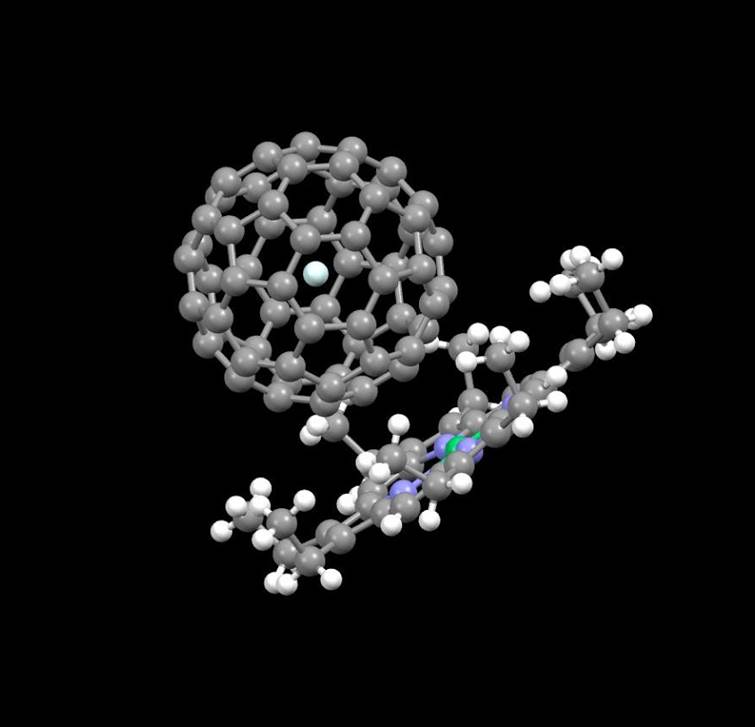Helium
Helium:

Helium makes up 45% of the surface of the sun, which is shown here in a picture from the STEREO (Ahead) spacecraft.
Facts about Helium:
- Helium: Colourless, odorless, tasteless, non-toxic gas at standard conditions
- Fun fact about Helium: Helium was first discovered in the 1860s by astronomers who were looking at sunlight, so it was named after ‘Helios’, the Greek god of the sun.
- Chemical symbol: He
- Atomic number: 2
A crystal structure containing Helium:

One atom of helium inside a molecule of fullerene (grey ball-like structure) and a molecule of nickel(II) octaethylporphyrin which uses attractive forces to hold the fullerene in place.
Facts about this structure:
- Formula: He@C60.2(C34H44N4Ni)
- Structure name: C60fullerene-helium (2,3,7,8,12,13,17,18-octaethylporphyrinato)-nickel(ii)
- Fun fact about the structure: Helium only has two electrons for us to find so it is very difficult to see inside crystals – this crystal is the only one in the database containing helium!
- CSD refcode: YEMTUH (What’s this?)
- Associated publication: Y.Morinaka, S.Sato, A.Wakamiya, H.Nikawa, N.Mizorogi, F.Tanabe, M.Murata, K.Komatsu, K.Furukawa, T.Kato, S.Nagase, T.Akasaka, Y.Murata, Nature Communications, 2013, 4, 1554, DOI: 10.1038/ncomms2574
More about Helium:
Helium gas is best known as the stuff for blowing up balloons or for making your voice squeaky. Helium is one of the most abundant gases in the universe (along with hydrogen) but it is also used for thousands of applications in chemistry labs around the world. The world’s supply of helium is running out so scientists are interested in exploring different ways to trap helium gas or recover it from the atmosphere. The helium atom is trapped inside a fullerene which is made up entirely of carbon.
Learn More About the International Year of the Periodic Table (IYPT) in Crystals Project:
This project (#IYPTCrystals) is part of the International Year of the Periodic Table celebration (#IYPT2019), read more about the project here.
You can follow us on social media; search for #IYPTCrystals or follow The CCDC on X @ccdc_cambridge on Facebook ccdc.cambridge, on Instagram ccdc_cambridge or on YouTube CCDCCambridge.
Understand some of the terms and concepts used with our Frequently Asked Questions page here.
A 3D visualization showing Helium in real crystal structures: